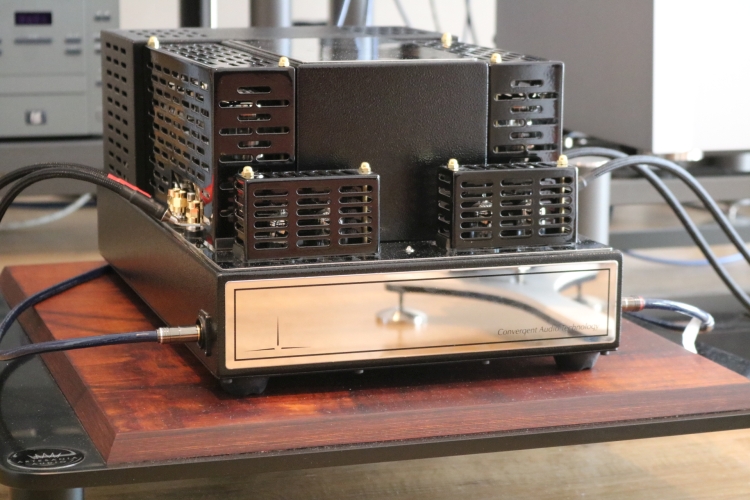
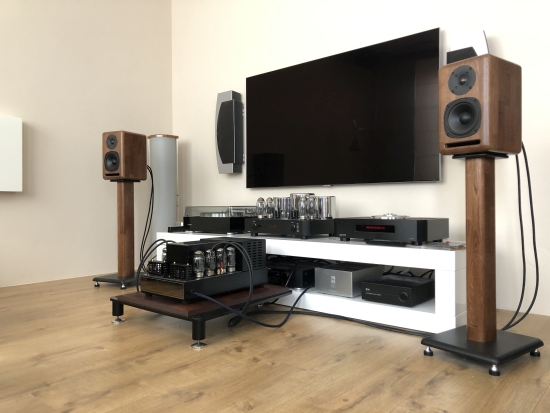
With Xavian Perla Esclusiva
In the secondary setup with the Xavian Perla Esclusiva loudspeakers, the JL5 looks positively majestic and it also sounds that way. Driven directly from the Ayon CD-10 II CD player and connected with AudioQuest Water interlinks and Driade Flow 405 speaker cables, the amplifier sounds generous in power and energy but also in a dimensional manner. Its pacing is perfect: neither slow nor hurried, and it has great dynamics. The amp throws a huge soundstage with great depth of imaging. It still amazes me that certain amplifiers can make the tiny Perlas image beyond the room’s front wall boundary and the JL5 certainly belongs in this category.
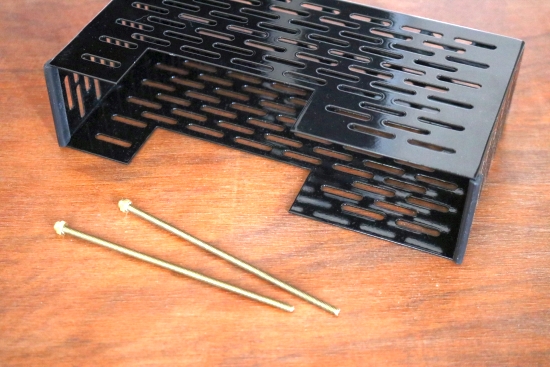
The tube-protector cages are very solid and are fixed in position with two long screws
The bass, while big and majestic, has good control and is integrated very well, never overwhelming the musical whole. While the amp has a colorful, rich, and powerful delivery, it does not sound colored. In fact, I find its delivery to be very well-balanced, if not strictly linear. No doubt because it is a Triode design, the JL5 has less “bite” and precision in the frequency extremes than I typically hear in this system with either the NuPrime ST-10 or the Ayon Spirit III. The bass and treble are just a little round and sweet. Now, whether one interprets this as a deviation from linearity or as an increase in naturalness is a bit of a personal matter. I prefer tightness and control, but to be fair, one could also interpret these differences the other way around, the JL5 being more natural and the Ayon being comparatively dry or “transistor-y”. It also depends on what kind of sound you are coming from.
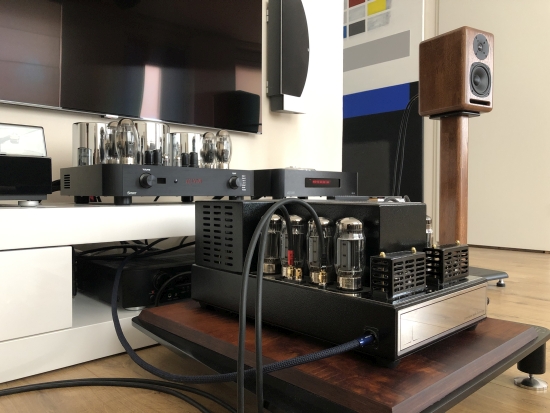
When starting with the Ayon Spirit III and switching to the JL5, what I notice most is the aforementioned softening in the frequency extremes. But, arguably of more importance, I also notice the increased spaciousness and, specifically, an absolutely luscious midrange. Rich, inviting, organic, and emotionally compelling, this is, of course, a Triode design’s main selling point. Especially with vocals and acoustical instruments, the JL5 sounds simply gorgeous. It has the kind of alluring delivery that makes one relax into the music.
Having listened to the JL5 for a while and switching to the Ayon Spirit III (as an integrated amp), the latter is very dry in comparison and with a very different dimensional presentation, smaller, more in-between the speakers, and much more static. When eliminating the Ayon’s built-in preamp by connecting its Direct Inputs, there are further gains in tightness, control, and articulation but also cleaner and drier, removing the presentation even further from the JL5’s. Admittedly, this kind of presentation does work well with hard-hitting electronic music such as Billie Eilish’s album “When we all fall asleep, where do we go?”. Playing the same tracks on the JL5 I don’t get the same kind of energetic vibe and that’s because this kind of music relies heavily on rhythm and transients and much less on tonality or flow. But when playing more traditional music styles such as soul and anything that concentrates on acoustical instruments with the Ayon, there’s now definitely some romance missing.
Relative matters aside, one thing that’s beyond discussion is the JL5’s ability to provide power, not only into medium loads such as the Xavians but also in more difficult loads such as the Magico S1 Mk2’s, as I will describe in the next section. With the Xavians, I could not find the amp’s limit, the speaker reaching their limit before the amp does. This is of great value as it is absolutely rare for the Triode mode’s seductive midrange qualities to be combined with such bottomless energy reservers as with the JL5.
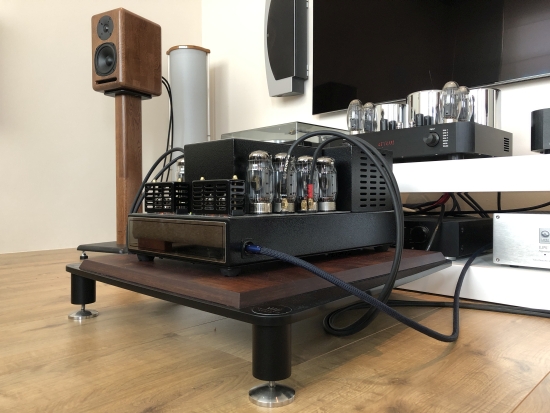
8 Ohm versus 4 Ohm
Although the Perlas present a nominal 8-Ohm load, I also tried the JL5’s 4-Ohm outputs. Where such a mismatch usually leads to a darker and more relaxed sound, the JL5 presents the music simply on a smaller scale with less immediacy but with the overall balance intact. While the 8-Ohm outputs were clearly preferred, this bodes well for the next speaker matches that will follow.
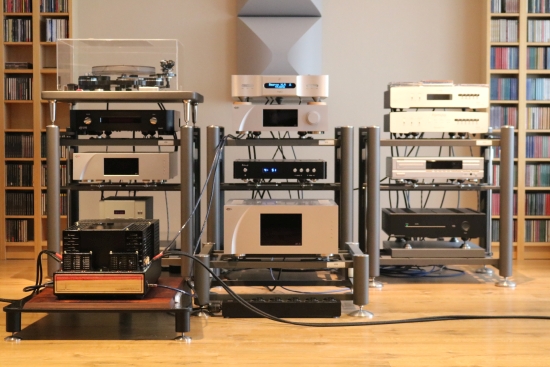
With Magico S1 Mk2
In the main setup in the large room, the JL5 will be connected to Magico S1 Mk2 loudspeakers via Jorma Trinity speaker cables. For this review, I will use the Antipodes K50 Music Server streaming Roon RAAT directly to the CH Precision C1 DAC as well as streaming via the HQPlayer plugin to the Aqua LinQ that outputs via a Jorma AES/EBU cable to the Vermeer TWO. At this moment, the TWO is not yet RoonReady but it is UPnP compliant. For this review, though, I will keep it simple and simply leave the Jorma AES/EBU cable connected to the LinQ while swapping it between the C1 and the TWO.
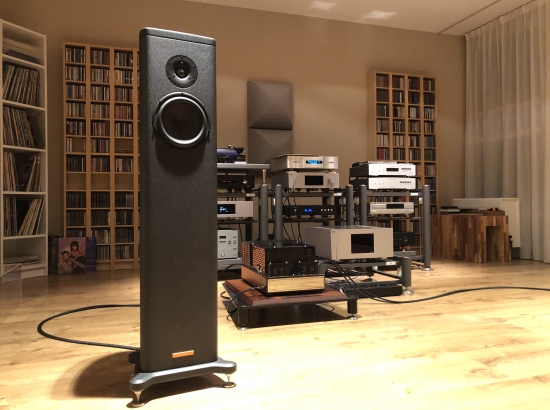
Between the C1 and the TWO, I will be brief as this is detailed in detail in the TWO’s review, but suffice to say that the Vermeer’s tight, open and dynamic yet organic sound combines beautifully with the JL5.
I carried out this section of the review with three friends, two of which are tube aficionados who were interested in hearing the JL5. After having listened to a playlist selection with my usual C1+A1.5 combo and switching from the A1.5 to the JL5, the experience worked out similarly as with the Ayon Spirit III. First and foremost, we all noticed an increase in midrange magic and while the JL5’s soundstage was not wider than that of the A1.5, it was considerably deeper and more 3D. The net effect was a very pleasant feeling of being engulfed in sound. Even though the S1’s are baby-Magicos, they are a lot harder to drive properly than the Xavians but, again, the sound was uncolored and very well-balanced. And the JL5 had absolutely no problems playing very loudly. Clearly, it seems to be living up to its reputation of being able to drive just about anything.
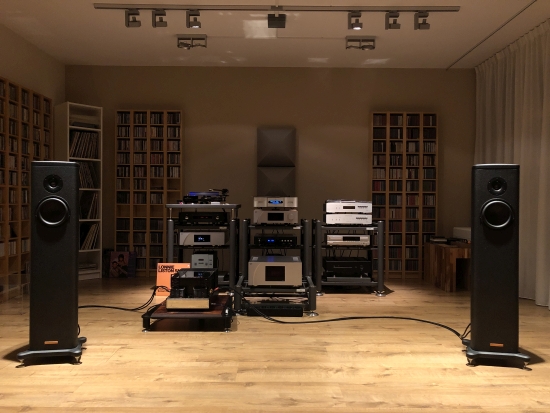
As with the Xavians, the Magicos, too, benefited from the JL5’s glorious midrange and we all agreed that, for vocal magic, there is no beating tubes. However, as lush and emotionally appealing the presentation, I also felt that the amp’s softness at the frequency extremes and its slight rounding of transients diminished the music’s “live” aspect, making rhythm-driven tracks sound less realistic than with the A1.5. Judging from my friends’ responses, not everyone will experience it like this. Two of them (MP and JW) were clearly in favor of the JL5’s more romantic approach while the third (Jan Cramer AKA Meneer Buis, AKA Mr. Tube ) preferred the CH, in spite of his colorful tube-history. What I can add is that, so far, no tube amplifier has been able to make me forget about the CH A1.5 altogether. And that’s only logical, for it is a transistor amp. I happen to favor the traditional transistor strengths and don’t mind the relatively less-developed areas that tubes do so well. The two camps will always bring their relative benefits and the decision between the two remains a very personal one.
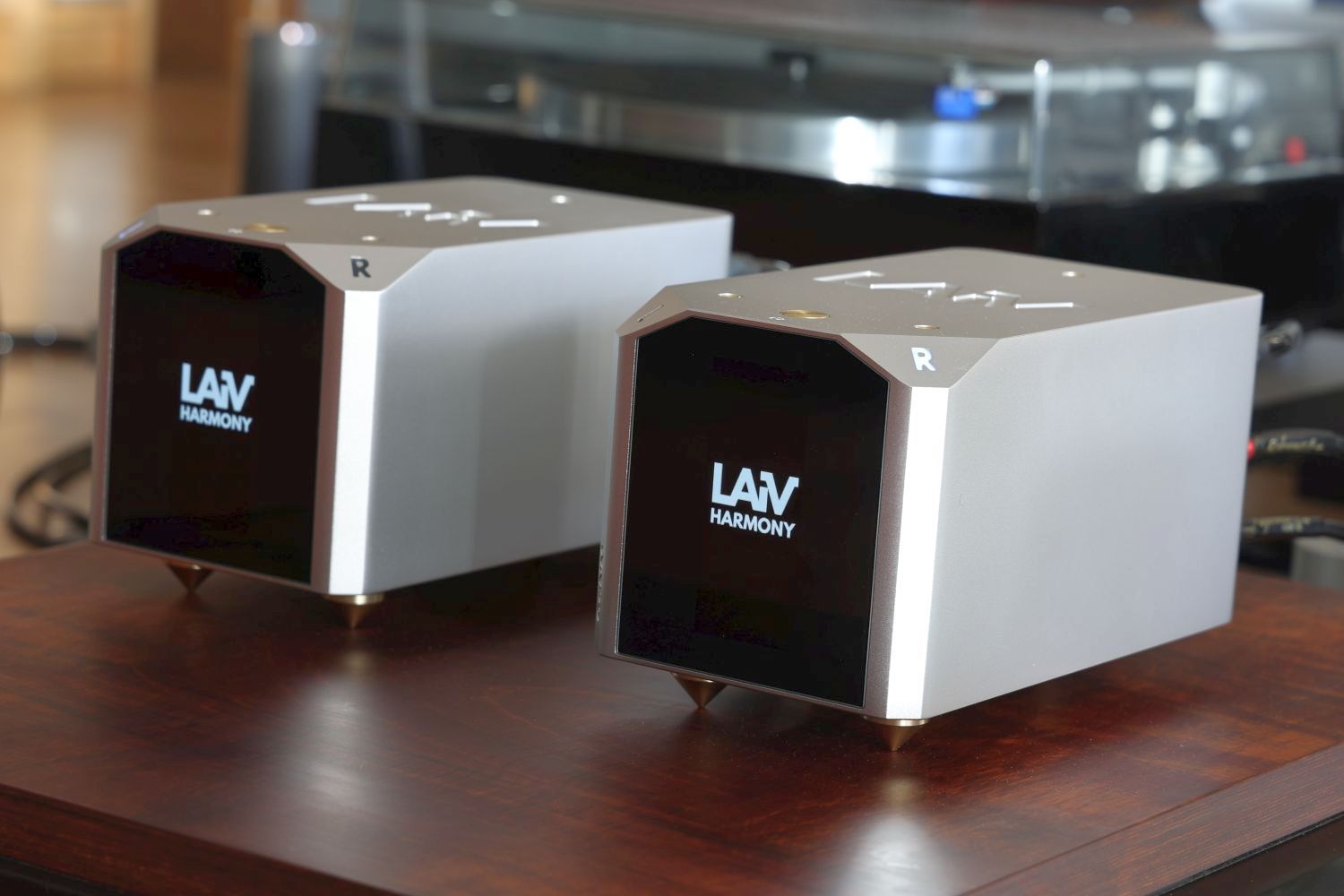
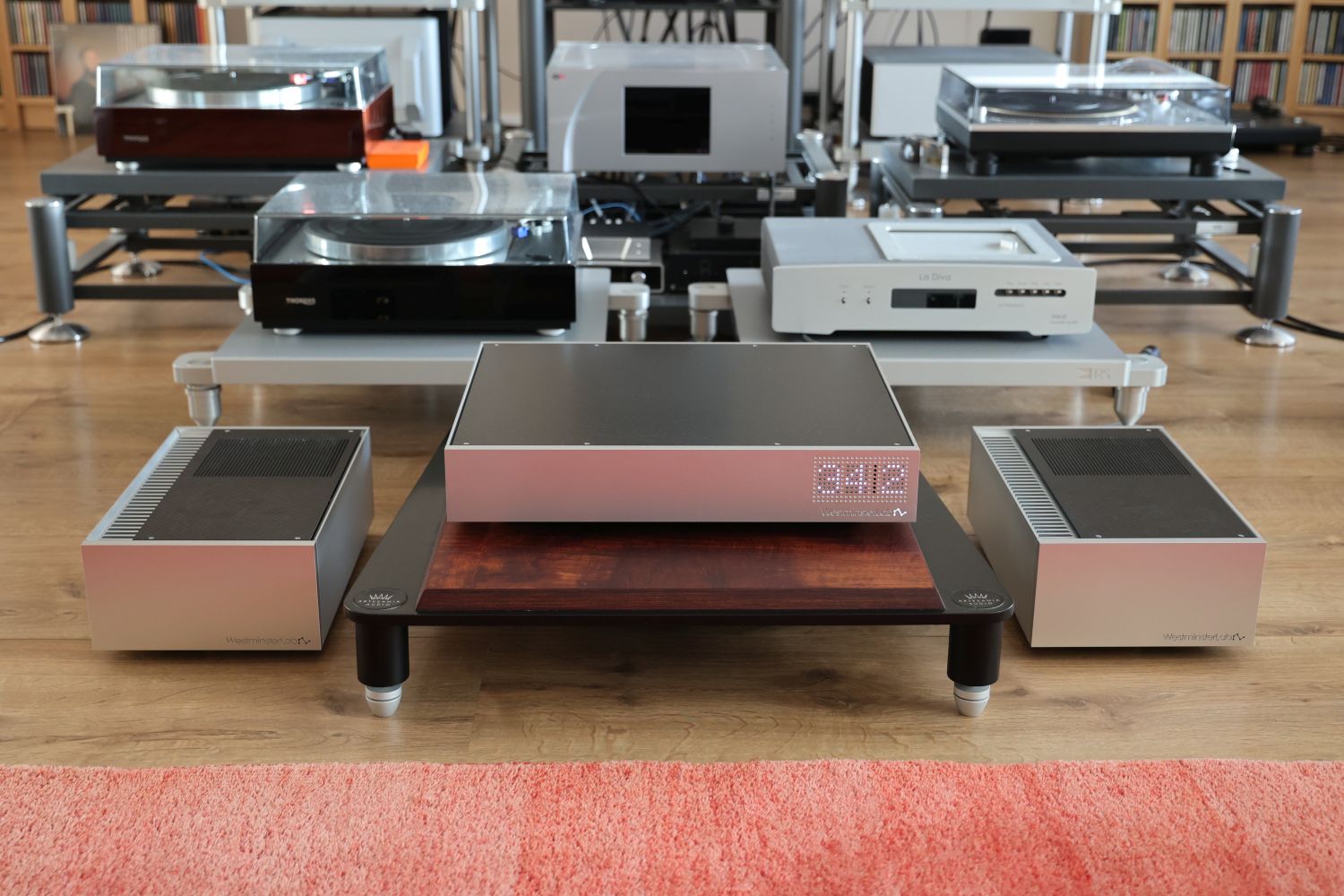
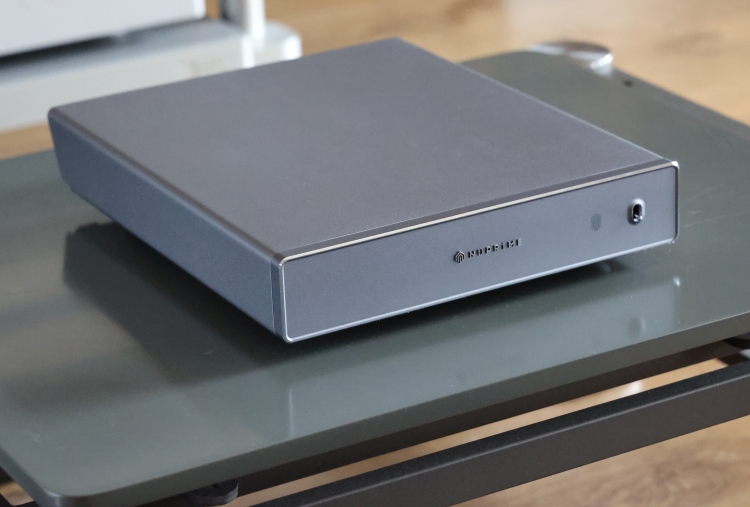
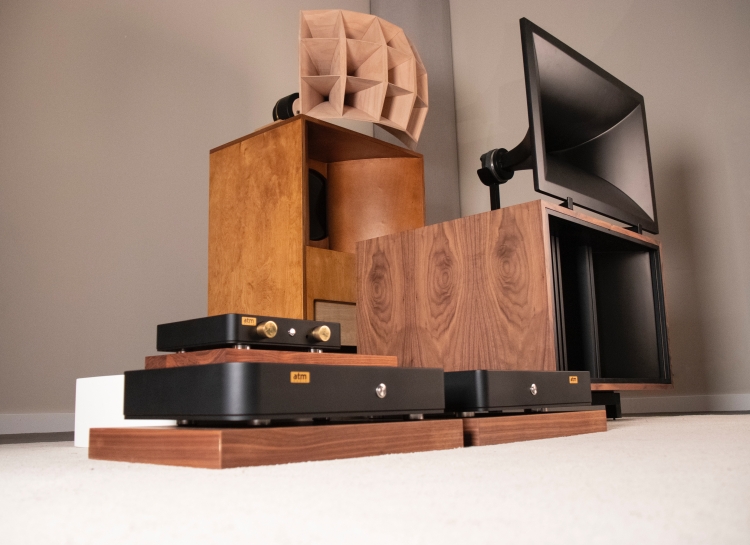
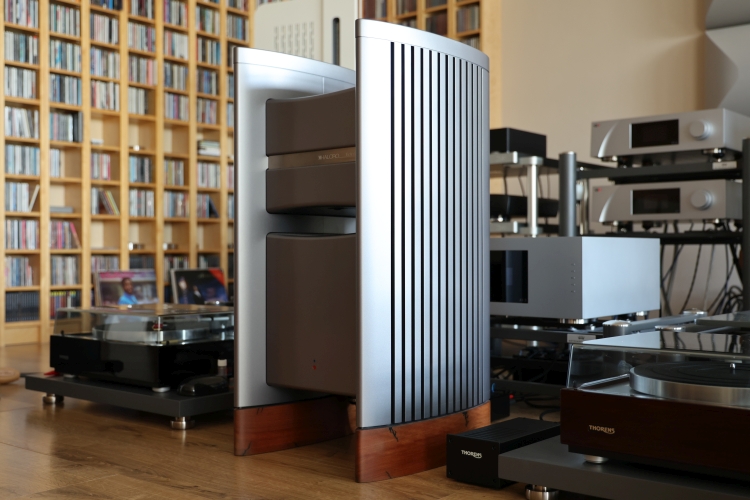
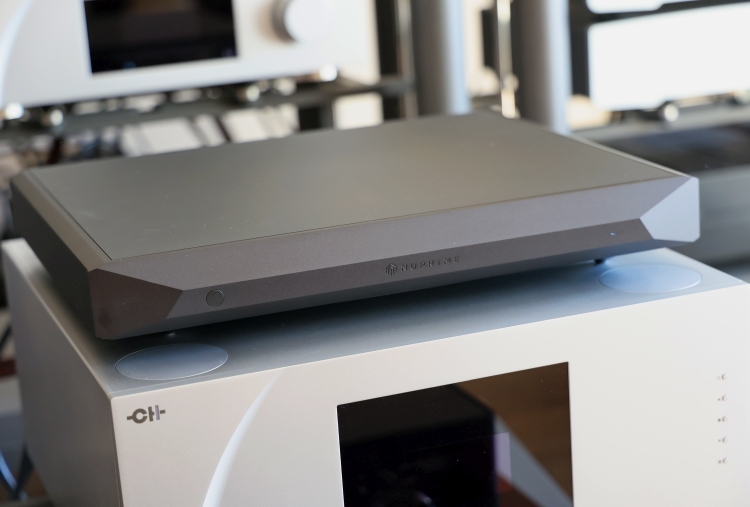
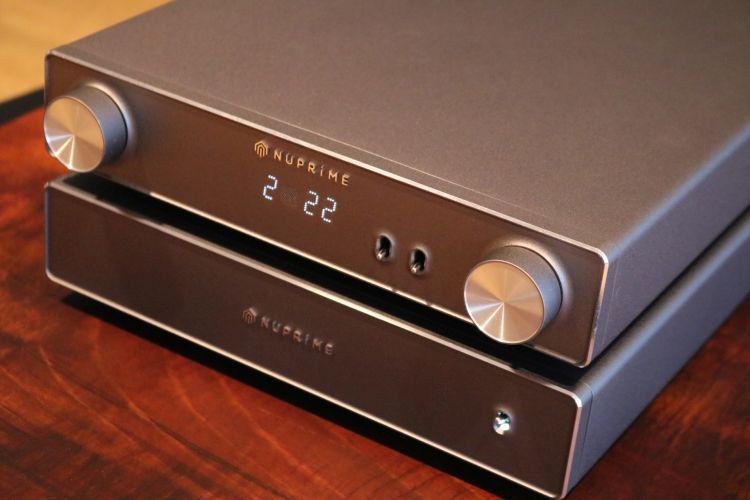
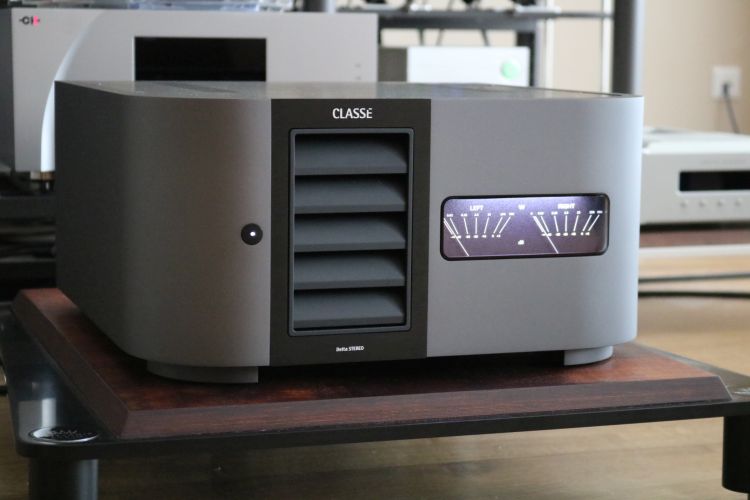
You’ve sold the ESL15A’s???
But why?
Did you replace them with something else?
Indeed. ATM I am using only the Magico S1 Mk2’s. Long story, which I will work into a new chapter of the HFA Audio History when I find the time.
Hey Christian,
A typically excellent and thorough review of an American brand that doesn’t seem to get much coverage stateside. One question did something weird happen with your editing? The review seems to start mid-stride without any sort of introduction. Not that it matters it was another great read thanks!
Cheers,
Jon
Hi Jon, you’re right. In an effort to improve the readability by shuffling parts around, I agree I actually made it look less great. It started with a lack of Company Background that made me question how to start the article. I’ve now added a tiny bit of info and have done some more shuffling and I think it looks better now:-)
Nice review! It’s all in the match, and CAT matches very well with Ceramic based speakers. Most succesfull here was a pairing with the German made Consensus speaker. Having owned almost all CAT models starting end 90’s with the SL1, the JL1 is still a favorite CAT but they need service and attention. Lions can be lifelong friends, but not with everyone. Watch the Lion Wisperer at Youtube and see what i mean..
Cheers. Ron Callas-Audio